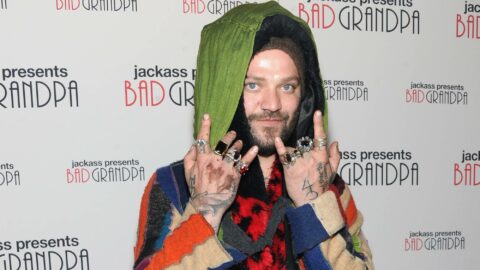
The first shot of Kislev’s forces we’re shown in Total War: Warhammer 3 is a Boyar performing death rites over dozens of hastily arranged gravesites, crude gatherings of stone and branches staked into the snow. It’s a sombre debut, especially for a faction first introduced to the fanbase in a snowstorm of fanfare, memes, and polar bears. The prologue lasts around four hours – a blip in the scale of dozens of massive sandbox campaigns – but it evokes a grim melancholy that hangs over these campaigns like burgeoning, black storm clouds.
You will send thousands of nameless Kislevites to their deaths during their campaign. Some will die still standing, refusing to give an inch to the oncoming tide of chaos. Some will meet a profoundly unceremonious end, drowned in a waterfall of sickly green arse goop from a shitting Great Unclean One. But because that prologue is there, some lingering tragedy is left to empower the statistics in the post-battle screen. Each fight feels that little more like a story.
All strategy games rely on a level of abstraction, and we need to willingly meet them in the middle, providing suspension of disbelief. Play along that, say, one of little icons that represent Stellaris’ pop resource is, in fact, thousands of sentient beings leading complicated lives dependent on our every decision. Perhaps Total War’s most enduring promise is that its real-time battles ask much less of us. Huge battles look like you’d imagine. Better, unless you’ve got the imagination to match Creative Assembly’s stellar animators.

The act of making this all feel potent – of contextualising this abstraction – is the real role of storytelling in strategy games. Put a line of spearmen and a few units of archers against a tide of foes in a custom battle, and it probably won’t spur much in you. But play the exact same battle, same map and forces, to repel a siege from a key city in Kislev’s defence against Chaos, after watching several character-driven cutscenes that show what this conflict means to each individual in that army, and suddenly it all feels monumental.
For the Total War: Warhammer series, that’s a job headed up by lead writer Andy Hall, who was kind enough to offer me some insight into the creative process behind the game’s stand-out narrative tutorial. Hall describes the prologue as “a profoundly Kislevian story” that “shows us how far inhabitants of this world are willing to go to bring peace to their lands – even if it means becoming consumed by the very thing that they’re fighting against.”
With the campaign having so many equally important players, the focus on Kislev was important for setting the scene. “As (Kislev’s bear god) Ursun is the inciting incident for the Realm of Chaos campaign, the prologue story needed to revolve around Kislev in order to bring that personal perspective into play.”

While genres like CRPGs are typically synonymous with great video game storytelling, my most enduring memories of epic yarns in the space still lies with RTS classics like Homeworld, Starcraft, and Warcraft 3. These were bespoke, linear, cinematic narratives, much different from the procedural stories that emerge from an XCOM, or a sandbox strategy like Total War. With the prologue, Warhammer 3 gives the best of both worlds, a tailored narrative with huge production values that colours the procedural gameplay to follow.
It would be dishonest of me not to talk about the similarities between the prologue and classic Blizzard storytelling without mentioning a much more striking parallel, though. Kislevian prince Yuri’s fall to the dark powers on a march into frozen wastelands to save his endangered people reminded me a great deal of Prince Arthas’ fall from Warcraft 3. I’m not the only one who noticed.
“I’ve seen this comparison since release,” says Hall “but it was not something we were conscious of or referencing during development. The insidious lure of power is a universal theme, and in this context, Chaos takes the form of that power. It’s a story well-trodden in Warhammer, and this is our version of that archetypal tale.”

It’s a fair point. Broken down, both Arthas’ and Yuri’s tales parallel any number of classic stories, and I think it’s partly its inclusion as a dramatic RTS plot beat that makes the similarities so stark. And, as I mention to Hall, it feels more like a tribute to the genre’s history than anything, not to mention everything that Warcraft – originally intended to be a Warhammer game, pending a licence that never materialised – owes to Games Workshop’s fantasy setting. Either way, it does little to detract from an incredible (re) introduction into the universe Hall and the team has brought to life.
“When I think about why strategy games might have great storytelling capabilities, I immediately think of the wealth of revered reference material that they’re able to lean on that provides the perfect pretext for massive army-on-army conflict,” says Hall. “For us it’s the massive amounts of lore and art that Games Workshop have built up over the decades – which has been deliberately designed so players always have a reason for conflict – for games like Battle for Middle Earth you have all the Tolkien material, and for games like Red Alert you have this geo-political base that’s turned up to 11 in terms of its wackiness. Worldbuilding is key to making something believable.”
Disconnected worldbuilding is one thing, though, but Warhammer 3’s thematic elements inform its design, rather than just being isolated text on loading screens. Cathay and Kislev both tactically function as stalwart, “hold the line, boys!” factions, suiting their role in the narrative. Both Ogres and Khorne feel like the unstoppable tide they should. So what does the back and forth between the writing and design teams look like, to keep all this cohesive?
“Since I joined CA, I’ve been privileged in that we haven’t really segregated the teams between ‘text’ and ‘design’. I’ve been lucky enough – with our Game Director’s encouragement and insistence – to be at the heart of the Warhammer trilogy’s design process. And if you think about it that makes sense, it should be an organic process, so I can impart my deep knowledge of the IP and work closely with the campaign and battle designers to ensure factions and faction features represent the races they are depicting.”
“And I think,” says Hall, “we’ve been successful at that!” And as I line up my Kislevite infantry to hold a choke point in a fight against Chaos Undivided, which is likely to decide to fate of at least one key province for my struggling but determined empire, and feel a swell of emotion for my tiny, nameless, replaceable regiments, I’m inclined to agree.
Total War: Warhammer 3 is available on PC.
The post ‘Total War: Warhammer 3’ feels like a return to classic RTS storytelling appeared first on NME.










